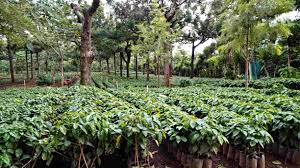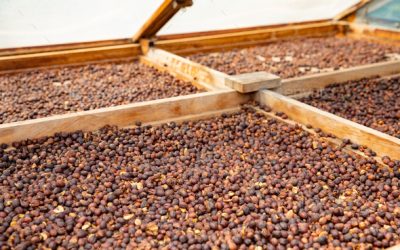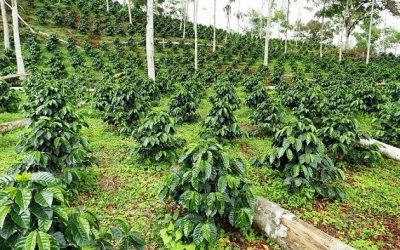Difference between Arabica and Robusta Coffee

You may have noticed that some coffee bag labels brag about the fact that their coffee beans are 100% Arabica. There are over 100 coffee species, however the two main ones that are widely produced and sold are: Coffee Arabica and Coffee Canephora (also known as Coffee Robusta).
Here’s a list of differences between the two coffee species:
1. Taste: Often Robusta has its taste described as burnt tires or rubbery.
2. Caffeine content: One reason that the taste isn’t as good for Robusta is that it has more caffeine compared to Arabica. Which may sound like a positive thing but caffeine carries a bitter taste which makes it an unpleasant drink. In fact the Robusta bean has 2.7% caffeine content, almost double the 1.5% of Arabica.
3. Lipid & Sugar content: Arabica contains almost 60% more lipids and almost twice the concentration of sugar than Robusta.
4. Robusta is easier to tend to on the farm, has a higher yield and is less sensitive to insects – the extra caffeine is a chemical defense for the coffee seed as the quantity in the Robusta is toxic to bugs.
One thing to note is despite the association with Arabica of being higher quality, and Robusta as being lower quality, it’s not always the case. Top notch specialty Robusta coffee will usually taste as good as or better than low end Arabica. However, high end Robusta isn’t widely used or available. Rather, Robusta is usually used as a filler or cost reducer.
5. The Shape: Robusta beans are much more circular, whereas Arabica are more oval.
6. Plant Height: Arabica usually grows between 2.5 – 4.5 meters compared to the 4.5 – 6 meter height of Robusta.
7. Chlorogenic acid (CGA) content: Robusta is 7-10% CGA and Arabica has 5.5-8% CGA.
8. Cultivation: About 75% of the world’s coffee production is Arabica, about 25% being Robusta. Brazil is the most significant Arabica producer and Vietnam produces the most Robusta.


